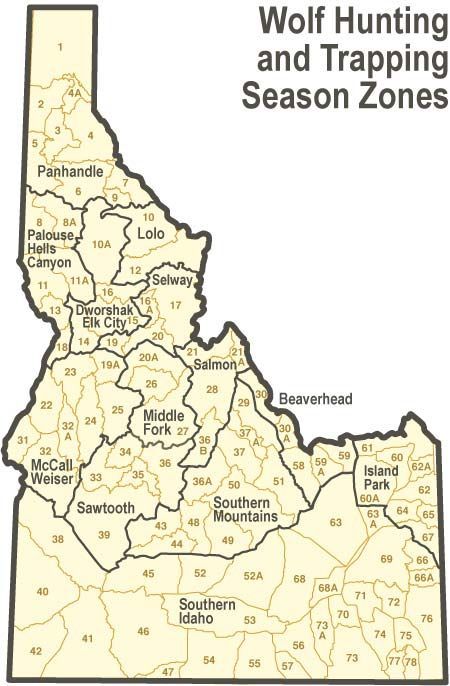Idaho’s wolf hunts are
nearing the middle of their seasons. The state is divided into 13 wolf
management zones that were created based on existing elk management
zones. Many of these hunts in specific zones started their seasons last
summer and are either year-around or end in late spring of 2016. As of
Nov.19, 89 wolves have been taken by hunters and 13 by trappers.
Five
of these management zones have limits on the number of wolves that can
be taken but none of the actual takes are anywhere close to the maximum
allowed. The Sawtooth Zone around the Sawtooth Mountains allows 60
wolves but only three have been so far.
During the
2014-2015 season, a total of 131 wolves were taken by hunters and 119 by
trappers. None of the zones reached their maximums. The Island Park
Zone had a maximum of 30 but only 10 wolves were removed. The most
wolves taken were in the state’s northern panhandle, where trappers took
66 wolves and hunters took 21 wolves. The second highest take was
around Grangeville and Elk City, where hunters took 17 and trappers took
15 wolves.
Several of the wolf management zone hunts
have two seasons. One season takes place only on private land and is
generally a longer season. The Selway Zone’s private land hunt is
year-around while the separate season on U.S. Forest Service land is
from Aug. 30 through June 30.
Of interest to Elko County is the large wolf zone
across Southern Idaho where one wolf was taken by a hunter during last
year’s season. This area is not considered good wolf habitat and acts as
a barrier to any wolves migrating south into Nevada.
The
state’s 2014 monitoring report states Idaho contained approximately 770
wolves in at least 119 packs with 12 new packs added that year. The
average pack size was 6.5 wolves and at least 173 pups were produced. It
lists one wolf pack in the Southern Idaho Zone but also lists eight
wolves removed by the state, and by other means. It also lists 12 sheep
losses due to wolves in this zone.


